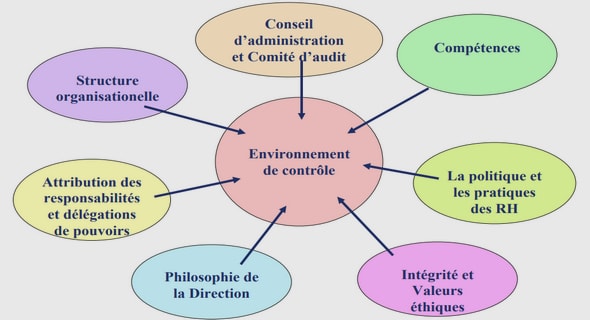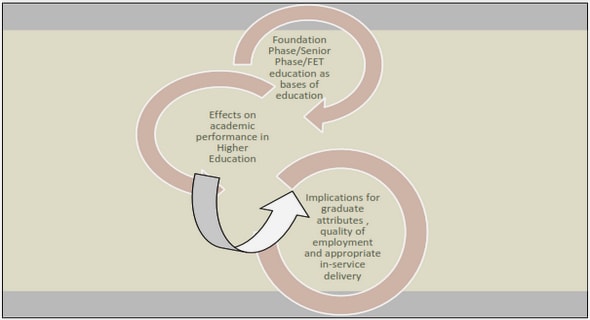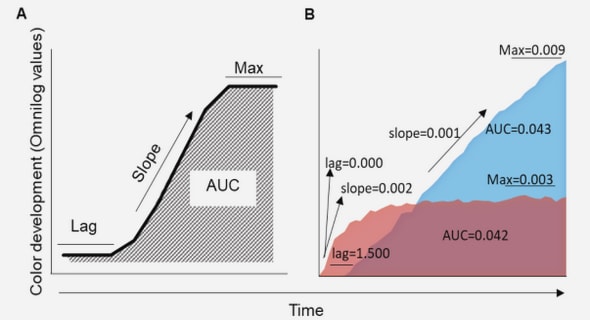Get Complete Project Material File(s) Now! »
Theoretical background
This chapter introduces the theoretical tools and concepts needed in order to understand the analysis. It starts with Nord’s translation-oriented text analysis approach (1997:59-67, 2005), in which aspects of Reiss’ text types (1981/2004:163-65) have been included. Next, there is a section where theoretical concepts discussed in this study are briefly presented. Lastly, different translation strategies discussed in the analysis will be presented and explained.
The translation-oriented text analysis model
Nord’s (1997:59-67, 2005) translation-oriented text analysis is based on a functional approach, i.e. translation is seen as part of communication between cultures, and it emphasizes features of the source text and the target text as well as the purpose of the translation. In her model, Nord (1997:59) highlights three aspects of functionalism which she considers particularly useful, namely the translation brief, a source text analysis and the classification and hierarchy of translation problems. Here we will look at the theoretical aspects of the translation brief and the source text analysis, these aspects will later be integrated in the analysis (see section 3.1). The classification and hierarchy of translation problems that arose in the current study will also be discussed in the analysis (see section 3.1 below).
First, a text analysis of the source text will help achieve a functional translation, as the findings of the analysis may help solve problem areas of the text on a “lower linguistic level” (Nord 1997:62-63). It should according to Nord (1997:62) be based on a pragmatic model which can be applied to the communication situation of the source text and the translation (brief) respectively, as a comparison of the two will show where the source text and the intended target text may diverge. Furthermore, a comparison of the target text reader and the source text reader will indicate what adjustments and adaptions may be necessary to achieve a functional translation. Ultimately, “the comparison between the source text and the target text profiles shows very clearly what source text information or linguistic elements can be kept invariant and what has to be adjusted to the requirements of the translation purpose” (Nord 1997:64).
Next, the translation brief should, according to Nord (1997:60), outline both the source text and the target text in terms of;
1) The (intended) text function(s),
2) The target text addressee(s),
3) The (prospective) time and place of text reception,
4) The medium over which the text will be transmitted, and
5) The motive for the production or reception of the text (Nord 1997:60).
The translation brief will ultimately help outline the communication situation of the translation. The communication situation will, in turn, help identify translation issues once it has been compared to the source text analysis and communication situation. The information will arguably also either support or oppose different options, which in turn will provide a foundation to support translation choices. Each aspect of the brief will now be presented in turn.
To begin with, the text functions (1) are important as they refer to what role the text is intended to have. Reiss’ (1981/2004:163-65) classification of text types in terms of function, focus and purpose will help establish the role of the text. Reiss (1981/2004:163-64) distinguishes four categories of text type, however, only the three that are relevant to this study will be mentioned here, namely the informative, the expressive and the operative text types. First, informative texts, such as instruction manuals or biographies, focus on factual content and they have an informative function, with the purpose of informing the reader (Reiss 1981/2004:163). Reiss (1981/2004:167) suggests a content focused translation strategy for these texts as the informative function and the content of the text is in focus. Next, expressive texts, such as travel guides or poems, focus on the artistic and aesthetic form, and it has an expressive function, with the purpose of expressing the sender’s vision (Reiss 1981/2004:163) and, according to Nord (1997:41), attitude. Here the translator should focus on “the artistic and creative intentions of the source language author” (Reiss 1981/2004:167) to maintain the expressive function. Lastly, operative texts, such as advertisements or warning signs, has an appellative function (e.g. making a plea, demand or request to the reader), with the purpose of eliciting a response from the reader. For operative texts, the appellative function should be in focus, i.e. one should aim at eliciting a similar response from the target text reader as one would from the source text reader (Reiss 1981/2004:168).
However, according to Reiss one text can contain a mix of text functions, which is the case of the material on which this study is based (see section 3.1), yet most often there is one function that takes priority over the others (Reiss 1981/2004:164). A book on India could for example contain factual information such as when, where and how the Taj Mahal was built, it could also present an artistic description of the Indian festival, Diwali. It could further comprise typical Indian recipes where a response from the reader is anticipated. In this case, the informative function is the primary function. However, recipes are first and foremost operative in nature which means that the operative function overrides the informative function where a recipe is presented.
Secondly, the information on the addressees (2), i.e. the target text readers, should be as detailed as possible and contain aspects such as cultural background, expectations towards the text, the extent to which they may be influenced etc. (Nord 2005:11). This will make it possible to identify areas which may need special attention in the translation. Next, the time and place (3) of publication are important details, especially if there are major temporal and spatial differences between the source text and the target text. For example, temporal differences between an article from 2009 and its 2014 translation may not seem important, but the article could contain temporal references such as yesterday, last Monday and next month which, because of the temporal difference, will need special attention in the translation.
The medium (4) of a text is also important as it could dictate the style and format of the text, as well as space restrictions etc. Lastly, why the source text was written could help determine the motive (5) of the translation, and as mentioned above the purpose of a translation is a key factor in Nord’s approach. She (Nord 2005:8-17) argues that any translation is determined by its purpose, and that it is a way of communicating across cultures, in which both the source text and the target text relate to their respective cultural and linguistic contexts.
For example, a speech made by President Obama is translated into Swedish for educational purposes where students are discussing and analysing the issue of the speech. On one hand, the primary function of the source text is expressive and maybe even appellative in its cultural context, as it could be seen as a form of propaganda. On the other hand, the primary function of the target text is to inform as the text will be used as study material. Thus, the function of the target text within its cultural context and communicative situation is not the same as that of the source text, due to the purpose of the translation. One could therefore argue that knowing the similarities and differences between the source text and the target text contexts will allow the translator to make informed decisions, specific for the translation task in question.
The theoretical aspects of Nord’s approach will be further commented on in relation to the source text and target text on which this study is based in chapter 3 (section 3.1). We will now turn our attention to theoretical concepts discussed in the analysis.
Theoretical concepts related to translation issues
Each and every profession has specific tools necessary to complete the work at hand. Ingo (2007:175) states that all tools have different qualities and that different tools are handled in different ways. For example, a hammer and a sledgehammer have different qualities which means that the builder handles them differently. Ingo (2007:175-76) argues that languages are the tools of a translator and that each language is used in different manners in terms of structure, variety, semantics and pragmatics. This means that sometimes the target language may not make use of the same linguistic structures as the target language or that an expression in the source culture is conveyed in a different manner in the target language.
As the cultural background of the source text readers and the target text readers is based on the culture to which they belong they will have diverging background knowledge and will therefore relate to different referents. The use of the term “referential differences” is, as mentioned above (section 1), in this paper directly connected to differences between the ways in which entities are referred to in the two cultures. It could for example be that in Sweden we distinguish between maternal grandparents (mormor and morfar) and paternal grandparents (farmor and farfar) whereas in Britain they do not (grandmother and grandfather), they do however have a variety of referents for grandmother (grandma, granny, gram etc.) and grandfather (grandpa, granddad, gramps etc.). A translator may also encounter instances where the target language lacks a direct equivalent for a word expressed in the source text. In this study, instances such as these are called “non-equivalents” (Baker 2001:20). One type of non-equivalence is when “the source language concept is not lexicalized in the target language” (Baker 2001:21), which means that the source language concept is known in the target culture but there is no word for it in the target language. The English word savoury is such an example. The word expresses a concept which is easy to understand, yet it has no equivalent in Swedish. Another type of non-equivalence is when the source language contains a word which expresses a concept that is unknown in the target culture. Baker (2001:20) calls this a “culture specific concept”. For example, the Swedish sparkstötting (a type of sled) is a culture-specific concept unknown to Brits thus there is no equivalent for it in English.
In addition, the source text may include instances where information is implied in the target text. This could arguably be explained by the fact that the author and reader share the same cultural background. Hence the author is presupposing that the readers have the same cultural background as her/him, i.e. they share the same knowledge about cultural norms (e.g. Brits: having a roast for Christmas dinner), culture-specific referents (e.g Swedes: a reference to Kling och Klang instead of explicitly referring to the police), commonly shared experiences (the experience of dancing around the midsummer pole during midsummer celebrations in Sweden) and much more. For example, a book written by a Swedish author is based on the cultural background of the author. Thus, Swedish readers are expected to understand a reference to the (bad) smell of “surströmming” (fermented Baltic herring) made in the text, as it is likely they have experienced the smell at some point in their lives (at the very least, the bad smell should be common knowledge amongst Swedish readers). A British reader on the other hand is most likely not familiar with “surströmming” or its smell, thus the implication that it smells bad becomes a problem if the text were to be translated into English. Similarly certain things may be explicit in the source text, such as the fact that it is the British Prime Minister that lives in 10 Downing Street. An explication such as this may be necessary in a text intended for a Swedish readership but it would be rendered superfluous in a text intended for a British readership.
Furthermore, names are often viewed as instances lacking semantic meaning (Ingo 2007:137), however, I beg to differ. For example, the plant Hyacinthoides non-scripta has the English name Bluebell (NHM), which arguably carries semantic value as the name indicates the colour (blue) and form (bell) of the flower of the plant. Ingo (2007:137) is of a similar opinion, as he suggests that most names originate in appellatives and that they therefore may carry semantic value. Thus, certain names can therefore be viewed as semantic expressions and nicknames can further be viewed as culture-specific referents.
The source text of this study contained a number of the issues and concepts discussed in this section, all of which will be addressed in the analysis (chapter 3 below). However, before we turn our attention to the analysis we will have a look at certain translation strategies connected to these issues.
Translation strategies
Chesterman (2002:7-11) describes translation strategies (though he calls them “conceptual tools”) as mental processes or ideas in which certain translation related issues are offered generalised solutions. In this section we will look at the translation strategies that were used in the translation on which this study is based.
Firstly, Vinay and Darbelnet’s (1958/1995:36-38) translation strategies “transposition” and “modulation” are useful when a problem arise in the translation process because of the difference in the manner in which the source language and the target language are used. Vinay and Darbelnet describes transposition (1958/1995:36) as a method where one word class in the source text is replaced with a different word class in the target text, without the sense being changed. However, Eriksson (1997:20-21) further suggests that transposition happens on a phrasal level: the principal of the school (prepositional phrase) skolans rektor (noun (genitive) phrase). Modulation (Vinay and Darbelnet 1958/1995:37-38) is a different strategy where the point of view changes in the translation. It is often used when literal or transposed translations are viewed as awkward, unidiomatic or unsuitable (1958/1995:36). For example; the positive expression nice! could be translated into Swedish with an expression written in the negative inte illa! (“not bad”).
Next, the issue of non-equivalence mentioned above (2.2) will be discussed. The strategy of “translation by cultural substitution” (Baker 2001:31-34) is when a source culture concept is replaced with a target culture concept which may not mean the same thing but is likely to effect the target text reader in a similar manner. For example: when the English concept of afternoon tea is translated with the Swedish concept kaffepaus or fika. Another strategy could be “translation using a loan word or a loanword plus explication” (Baker 2001:34-36). A loanword could for example be culture-specific items (pizza), modern concepts (Internet), buzz words (selfie) etc. If the loanword occurs frequently in the text, an explanation is useful because once the word is explained it can be used on its own. Vinay and Darbelnet’s (1958/1995:32-33) “calque” is similar to the latter translation strategy, but here the source language expression is literally translated instead of directly transferred (e.g. I was hanging with friends (Eng.) Jag hängde med polarna. (Swe.)). Furthermore, a word could be omitted (Baker 201:40-42) to enhance readability, if the word is likely to distract the reader and if the inevitable loss of information does not impede the development of the text.
Lastly, possible problems caused by implicit or explicit information in the source text could be solved with the strategies of explication and implication respectively (Ingo 2007:123-24). For example: implicit information in the source text is explicated in the target text: Vi möttes på Arlanda We met at Stockholm airport, Arlanda. This strategy is used when it is believed the target reader needs clarifications to understand what is implied.
Implication is the opposite of explication: explicit information in the source text is left implicit in the target text (We met at Stockholm airport, Arlanda Vi möttes på Arlanda).
In this section, different translation strategies in connection to different translation issues have been presented, however, the context and purpose of the translation often dictates what strategies should be used in each case (Baker 2001:20-21). It can thus be argued that the translation-oriented text analysis model mentioned above (section 2.1) will ultimately aid in making translation choices. However, the analytical tools presented in this chapter (the translation-oriented model (2.1), the conceptualisation of issues (2.2) and the translation strategies (2.3)) will be applied and discussed more in depth in the analysis.
Table of contents :
1. Introduction
1.1 Aim
1.2 Material
1.3 Method
2. Theoretical background
2.1 The translation-oriented text analysis model
2.2 Theoretical concepts related to translation issues
2.3 Translation strategies
3. Analysis
3.1 The translation-oriented text analysis model
3.2 Reader differences
3.2.1 Author-reader relationship
3.2.2 Referential differences
3.3 Spatial differences
4. Discussion and conclusion
References


